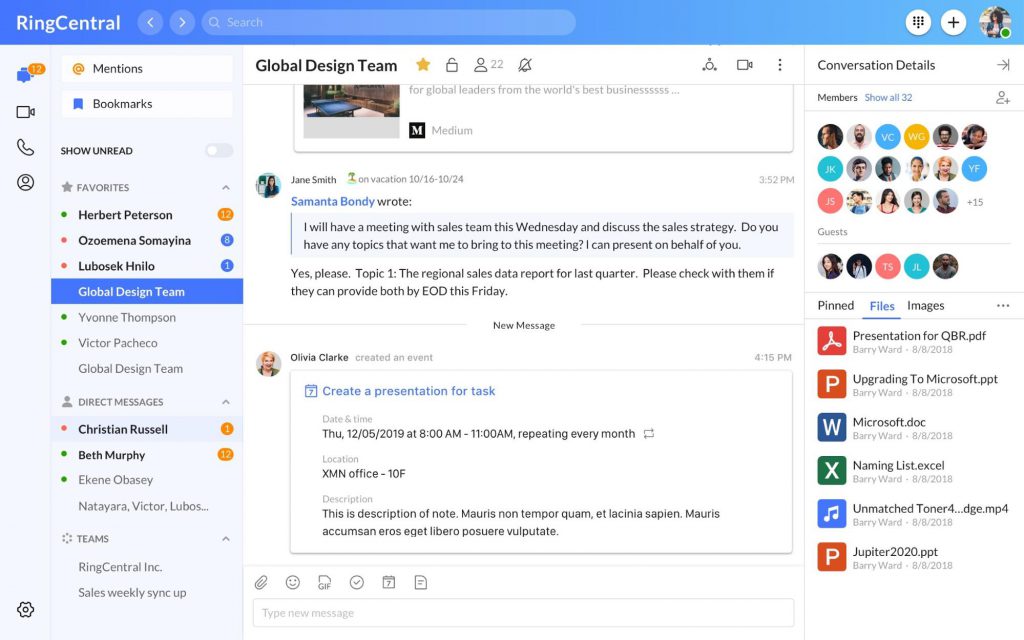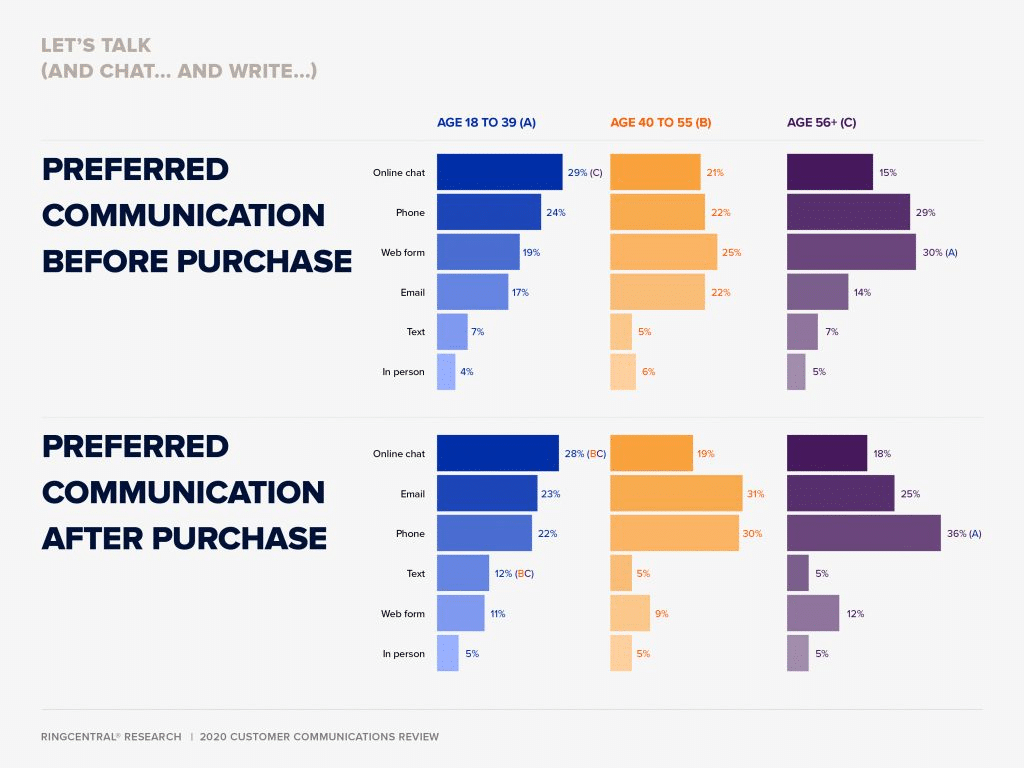We’ve all been there: you’re on an island vacation, or maybe a long weekend by the lake. As the final night of work-free bliss arrives, so does the familiar pit in your stomach.
How many new emails are waiting for me? you wonder. The next day flashes before your eyes: eight solid hours of nothing but replying to mile-long threads from coworkers and clients, clarifying things that have gotten completely confused while you were gone. You start to regret ever taking this vacation. Then you think about never going back to work—starting a new life, living off the grid where no Reply All can ever hurt you again…
If this sounds familiar, you might be suffering from email overload.
Today, we’ll cover:
- What is “email overload”?
- 5 negative side effects of too many emails
- 7 warning signs of email overload
- 9 ways to knock out email overload
What is “email overload”?
Email overload is basically the inability to stay on top of your email inbox. This happens quickly, especially at work. Between coworker back-and-forths and all those mailing lists you’ve ended up on over time, you could receive dozens or even hundreds of new emails every single day.
If you think that most people share the problem of too many emails, you’d be right. But just because it’s seen as “normal” doesn’t mean it isn’t affecting your work… or your mental and physical health. Read on for some tips on how to manage emails for better business and wellness.
📥 Are you over email? If you hit at least one of the points on our checklist, it’s time to consider an email alternative.
5 negative side effects of too many emails
1. Email overload is literally bad for you
Did you know scientists have actually studied the effects of emails on our brains? It turns out that the more emails you have, the higher your workload stress is.
According to a recent study, “higher workload stress is associated with higher psychological strain, higher negative emotions, and lower organizational commitment.”1 Chronic stress can lead to all kinds of physical and mental ailments, like high blood pressure, anxiety, depression, and even increase your risk for heart attack.2
There are lots of reasons why email overload can be bad news, but this one is more important than them all. You have enough stressors in your life; maybe with our tips you can knock out email as one of them.
2. More emails = less productivity
In case you hadn’t heard: “multitasking” isn’t a thing.3 So if the average American worker spends five hours a day reading emails,4 that means they only spend three hours a day doing their actual job.
We have a hunch that you can think of better ways you’d like your team to spend their time. There’s got to be a better way to share that team knowledge, right?
3. Lost conversations, tasks, and files
An email arrives with an important attachment for an upcoming project, so you save that email for a magical time in the future when you have a free moment to work on the file. But then 28 more emails come in, and that very important message gets buried and forgotten before you have the chance to download the file.
Now you have to try to remember what the subject line of the email was, or who sent it, or the name of the file: anything that will call up the attachment so you don’t have to ask for it a second time and reveal how behind you are.
Anyone else just get the cold sweats?
It’s easy to lose track of attachments as well as tasks, which can often get buried in the middle of an unread thread. With email, there’s no way to “@” someone to make sure they get the memo. That means more dropped balls and, yes, more emails following up.
4. Impatient or upset coworkers and clients
Effective communication techniques tell us that people don’t like to feel ignored. Even if you have the best intentions when you put off responding to an email—you want to give it the attention it deserves, after all—the impact can be bad for business.
Leaving emails unanswered can lead to bad feelings among coworkers and between your business and the customers you serve. These bad feelings breed misunderstandings and a lack of trust that can be hard to undo.
It also doesn’t help that emails become more popular with customers after they’ve purchased from you. Among the 18-39s, 17% of respondents in a recent survey said that email is a preferred form of communication before they buy from a company, and it jumps to 23% after they’ve made the purchase. The difference for the 56+ group is even greater, going from 14% to 25%:
5. Employee retention suffers
Technology has put our work emails right in our pockets at all times. And when you have a huge backlog of emails sitting there, it’s tempting to let your workday spill into your very important time to decompress. This isn’t just hard on your own personal work-life balance; it also affects your employees and their interest in sticking around.
If you’re answering emails after hours, your team sees those notifications and feels the need to respond. So now everyone is working and ignoring their families or friends or that new book they looked forward to reading. As a leader in your office, what you model becomes the culture. Employees today are interested in positive work culture and balance, and they’re not afraid to go find it somewhere else.
7 warning signs of email overload
How do you know if you’re working toward a total email avalanche? Here are a few red flags:
1. Your team communication needs work
When instructions and updates from leadership (and among team members) aren’t clear, confusion arises. This can lead to lots of emails asking for clarification, which could have been prevented with more direct and helpful information upfront.
2. Meetings create more questions than answers
How does your team use meeting time? Are they all arbitrarily set to an hour long, and filled with a bunch of hot air that no one needs? Do people leave with specific action items so they can move forward, or just vague suggestions on how to progress?
Meetings are a notorious time-suck when they aren’t well structured and clear in their purpose. This usually means a lot of email follow-up is necessary afterward, to set or clarify action items and answer questions. If you’re wondering how to stop excessive emails, one big way is to make your meetings better. More on this later.
3. The dreaded follow-up emails
What the email says: “I just wanted to circle back on this…”
Translation: “You clearly forgot about my email, so I hope this passive-aggressive follow-up finally gets me a response.”
When you start seeing these emails, you know you’re on your way to an overload. You’re already dropping the ball, and it’s not going unnoticed by coworkers and potentially customers, too.
4. You’ve gone “unread blind”
“I’ll just leave this email unread so I know I need to respond to it.”
Sound familiar? We’ve been there. What this clever little plan forgets, however, is that tomorrow a new batch of unread emails will come in and bury the one at the top of your inbox. It also doesn’t think ahead to next week, when you’ve amassed a slew of saved, unread emails; when they’re all “unread,” the urgency is gone.
Whether you keep those “to-do” emails unread or flagged, you’re bound to start missing things. And that’s when things start slipping through the cracks.
5. Your desk looks like a ticker tape parade
If your workspace is covered in shreds of paper and sticky notes telling you to respond to this email or that, the email overload is real. At this point, your eyes glaze past those unread messages and you need outside, in-your-face reminders to follow up.
Spoiler alert: you’ll start missing those reminders, too. Paper notes are but a mere bandage and won’t stop the inevitable.
6. You’ve got a wicked case of the “Sunday scaries”
If your Sunday nights are routinely spent dreading Monday morning’s inbox, you might be knee-deep in email overload mode.
The Sunday scaries is a real psychological phenomenon that’s been studied and reported on over the last few years. The grind of the modern workplace has us stressed to the max, and the growing number of emails is partially to blame.
7. Your customers are starting to notice
Internal communication logjams often impact your external communication, too. If customer emails are getting lost in the shuffle and they’re having to contact you multiple times for assistance, this can really impact your bottom line and customer growth. However, make sure that the domain’s safety is not the reason why your customer emails get lost. To do that, you can use an SPF record tool.
Here’s hoping you haven’t reached this stage of email overload just yet, but even if you have, don’t worry! There’s always time to course correct.
9 strategies, tips, and tools to cope with email overload
1. Set aside time to get caught up
If you’re already in the middle of email overload, you’ll probably need to bite the bullet and spend some time digging your way out. We know how it goes, though; other projects and meetings come up, and the time you’d planned to purge your inbox just disappears.
The solution: block time on your calendar to clean out your inbox, as if it’s a real meeting. Don’t let that block get pushed around; stick to it for an hour. And if you need another hour (or more) after that, schedule more time and stick to that, too. Once you’re out of the overload and following these other guidelines, it should be easier to stay on top of the pile.
2. Declutter your inbox with automation
If your inbox is anything like ours, there’s some serious white noise going on that you just keep scrolling past instead of handling. But there are some helpful task automation tools you can use that can manage the clutter without cutting into even more of your time.
Thanks to some (free!) tech, you can now unsubscribe from tons of email lists at once: no hunting for that microscopic link at the bottom of every email. Look into apps like Unroll.me or Unlistr that audit your inbox, find all your subscriptions, and give you the option to unsubscribe or stay in touch.
3. Migrate to messaging
You’ll never get rid of the need for written communication, especially if you’re trying to engage your remote team members (or fully distributed teams). But one way to keep your email lighter is to let a messaging app do the heavy lifting.
Instant messaging is a better way to talk back and forth about a project without clogging your inbox. Given the nature of instant messaging, folks usually don’t write an entire dissertation before hitting Send, which means questions and concerns are addressed quickly one by one. It’s also a little easier to read tone in these faster exchanges, so there are fewer misunderstandings.
But a great messaging app goes a long way beyond sparing you the email threads. A good standard is the RingCentral app, which includes a team messaging interface that lets you:
- Start groups for different teams and projects
- Pin important messages for future reference
- Easily access all files shared in the group (no more losing attachments in your inbox!)
- Set tasks for group members that they can easily check off, instead of sending an email to confirm
- Quickly find specific conversations, groups, or team members

4. Know when to go face-to-face
Even when messaging, there can be times when you need to be able to hear or see your team to get points across. This can go a long way toward making yourself clear and reducing the amount of questioning emails you receive.
If you’re an all brick-and-mortar office, it’s a good idea to set some guidelines about when folks should get up from their desks and speak face-to-face to their colleagues about an issue. If you have some (or all) remote team members, an effective all-in-one communication app like—you guessed it—RingCentral will allow you to switch seamlessly from messaging to video or phone and stop confusion in its tracks:
5. Create a better email culture
It’s up to leadership to set the tone on email culture within your small business. Here are some potential guidelines you can try to establish to cut down on email overload:
- When (and when not) to CC or BCC someone
- What kinds of discussions require face-to-face conversations
- No one-word replies: skip the “Thanks!” emails
- Reply All: check and double check before replying
- Use “Don’t Send Response” in Outlook when replying to meeting invitations
- Email-free zones: before and after work, on weekends, whatever makes sense for your team
Remember: putting something down in black and white doesn’t automatically change the culture. It’ll take some time and regular effort: everything from going over these protocols in orientation to regular reminders and refreshers for your team. And as we said earlier, your modeling of this new culture goes a long way toward adoption.
6. Optimize your meetings
If your meeting time is better used, you can minimize the need for clarifying email chains afterward. Here are some ways to tighten up meetings on your team:
- Set the standard meeting time as 15 or 30 minutes, so people don’t feel the need to fill 60 minutes with fluff
- Use meetings for strategy, brainstorming, and planning sessions: things that need live, face-to-face interaction to be successful
- Use team messaging for short check-ins and status updates as much as possible
- Require clear agendas that include time for assigning action items
- Send agendas ahead of time so introverts have time to prepare their questions and input and won’t need to email you afterward
Just like with email protocol, shifting meeting culture in your office can take some time. Don’t give up!
7. Respond promptly
According to research by Harvard Business Review, the more quickly you respond to emails, the fewer you receive.5 That’s probably because it eliminates the follow-ups and requests for clarification.
Once you’ve gotten on top of your inbox with some of the suggestions above, try your best to respond to emails (and organize those attachments) as soon as you receive them for better peace of mind.
8. Don’t be afraid to unplug
We now know how much time email takes up in a day. There’s no shame in logging off to get some distraction-free work done. Block some time on your calendar and set an automatic reply: if people email you during this period, they’ll get a response when you will be back. Let the important folks know how to reach you with emergencies.
If you make this a regular thing—every Wednesday from two to four, for instance—everyone will adjust to it. They might even adopt this strategy for themselves, which could lead to a more productive team overall.
9. Be the change
Office-wide decrees will never change everything. It bears repeating that as a leader, you’ll have to model the email culture you want to see and set the tone on work-life balance for your office.
Mastering email overload
Drowning in emails can really affect your and your team’s health, and the health of your business. Luckily, with some innovative leadership and an assist from the right technology and communication tools, you can reduce the number of emails you receive and get some balance back in your life and work.
On top of all this, RingCentral could save you up to $400 an hour in IT costs.
Explore the RingCentral Advantage for small businesses:
1 emerald.com/insight/content/doi/10.1108/ITP-10-2017-0321/full/html
2 healthline.com/health/stress/effects-on-body#1
3 psychologytoday.com/us/blog/creativity-without-borders/201405/the-myth-multitasking
4 cnbc.com/2019/09/22/heres-how-many-hours-american-workers-spend-on-email-each-day.html
Originally published Apr 15, 2020, updated Nov 10, 2022







